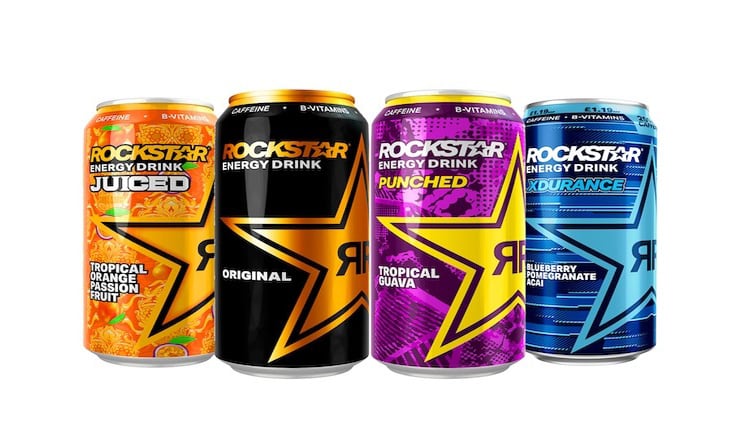Widespread warnings in the national press covered medical studies linking obesity to higher incidence of serious illness and death from COVID-19.
And while gyms and leisure centres were shut during lockdowns, evidence indicates sales of mainstream sports nutrition products kept growing overall, driven by a switch to home exercise, popularised by celebrities such as Joe Wicks.
Steve Granite, chief operating officer at Applied Nutrition, concurs. The company saw more online sales direct to consumers as some people still wanted the benefits of a workout.
People stopped buying pre-workouts
However, he says he observed a change in terms of what consumers were after in 2020-2021. “People stopped buying pre-workouts and protein as they could not get to the gym.”
“New customers were going to the website and buying vitamins and powders for health and wellbeing.”
People are certainly more aware of their need to keep healthy. According to the Kantar ComTech panel, 2.5M adults started to track fitness in 2021 in addition to the 16M who already did.
The data suggests that interest will drive sustained growth in sports nutrition. According to research company Fact.MR, the global market was valued at $34.8bn in 2020 and is projected to reach $67.9bn by 2030, registering a compound annual growth rate of 5.4% from 2021 to 2030.
Sports and leisure sector reopens
That growth looks set to be compounded by the reopening of the sports and leisure sector. Research company Statista states there are more than 7,200 health and fitness clubs in the UK, with more than 10M combined members.
As the country gets back to some normality, consumers purchasing habits have changed again, back to pre-pandemic levels, says Granite. He believes they are looking at protein products for muscle recovery and pre-workout products containing caffeine and stimulants to give them extra energy.
In addition, while sales of ‘grab and go’ and convenience carbonated drinks and gels inevitably plunged over the past two years, these are now back in growth, he says.
It’s not just gyms that are stocking these items as Applied Nutrition products are now stocked in places such as garage forecourts and they are in talks with the major grocers.

Convenience over cost
“We found people were looking for convenience over cost and we really have in the last six months massively extended our range,” Granite explains.
“Grab and go is the biggest growth segment in sports nutrition and we think users will increase because more people are being educated on nutrition and need to stay healthy.”
This change also lies behind another interesting development in people who use sports nutrition products. According to Granite, it was previously a male dominated category with an age range of 18 to 30 but now it has a more equal male and female split with the age extending up to 50.
He also says innovation is taking place with probiotics making their way into various products as well as a move to plant-based.
Challenges
While there are many positive indicators in the market, it’s not without its challenges, though. One big dampener on suppliers’ moods is Government plans to restrict promotions of food and drink high in fat, salt and sugar (HFSS), which are set to take effect on 1 October.
The European Specialist Sport Nutrition Alliance claims the poorly defined restrictions could risk damaging the sport nutrition industry.
But Granite says while there are companies that focus on HFSS products for sports, many are altering that approach. Applied Nutrition has already focused on low fat and low sugar products with high protein and clean carbs and this is a growing trend among manufacturers.
“When we started out, our products were aimed at the body builder but society has changed now and people want a more athletic look. That is why we reformulated our products a long time ago to give people the muscle look but not the big size.”
As a consumer, I would entirely ignore HFSS labelling on the products I eat
HFSS
Meanwhile, Kieran Fisher, founder and managing director of KBF Enterprises thinks the whole idea of HFSS is ‘out of kilter’ with modern health and nutrition science.
He argues the idea of a ‘one size fits all diet’ is incredibly old-fashioned. “As a consumer, I would entirely ignore HFSS labelling on the products I eat.
“Fat is great for natural testosterone production, joint lubrication, and animal fat often carries many micronutrients and vitamins in it. In fact, take eggs as an example – all the vitamins are in the yolk, which is 50% fat. The white just has a bit of protein in it - that’s it.”
Fisher agrees the pandemic made people realise they couldn’t take their health for granted.
Market recovery
“Presently, I believe the overall market has recovered and is a little larger than last year. We’re seeing some growth due to ingredient cost price inflation feeding its way into retail prices, but also some growth through people making better eating choices.
“More people than ever now recognise the importance of a low sugar diet, of supplementing with Vitamin D (especially in the cold UK), and of protein in terms of optimising their health and performance.”
He suggests pricing of these products has also had an impact on the market, as consumers want what was considered specialist food like sports nutrition to be priced closer to traditional food.
“Sports nutrition needs to be more realistically priced if it’s going to work and the idea many retailers have of not wanting to ‘devalue the category’ is achingly old fashioned,” he adds.
Macronutrients
He says innovation is continuing with a focus on macronutrients as well as the taste. He highlights nootropics (brain supplements) – taken by people who want to improve memory, creativity and intelligence. And he predicts continued growth in products containing cannabidiol (CBD), as many athletic people are already using it for joint inflammation.
Chris Draper, UK & Ireland sales manager and key account lead, PureCircle by Ingredion – beverages category, believes the pandemic encouraged many consumers to investigate supplements and active nutrition products more generally.
“If we look at stevia as an ingredient, 37% of all new product launches in 2021 came in sports nutrition across bars, powders and energy drinks,” he adds.
“There’s a strong trend in sports nutrition towards multichannel/online selling, which meant that sales remained strong and actually increased through the pandemic as consumers could order from home.”

Plant-based and natural solutions
While demand is increasing, Draper singles out plant-based and natural solutions as the biggest trends. This is partly because of a blurring of lines between categories and partly a result of sports nutrition becoming more about general ‘lifestyle nutrition’ and less about hardcore athletes, he says.
Interestingly, these trends have been making their way to more mainstream products.
The Britvic Soft Drinks Review 2022 showed that stimulants and energy drinks sales have been on the increase.
Stimulants
In the convenience sector stimulants (energy drinks) overtook cola as the biggest category in terms of value sales. Sales of stimulants grew by 21% and increased in value by £116m. In hospitality and foodservice they also outperformed the market, growing by 28%.
According to the report, stimulants continue to cater for consumers’ needs, as 53% of the population often say they feel tired.
This has led to the sector becoming the fastest growing and biggest category in convenience in the last two years, now worth £666M.
The report states: “Despite the growth of stimulant energy, there is still significant headroom for the energy segment through continuing to drive penetration, which remains low, and evolving the energy offering to appeal to the health-conscious consumer.”
In addition to stimulants growing in popularity, there are further innovations entering the mainstream sports nutrition market.

Non-alcoholic beer
For example, non-alcoholic beer Erdinger Alkoholfrei is popular among amateur fitness enthusiasts and professional sports competitors as an isotonic recovery drink that provides the body directly with nutrients and helps restore lost fluids.
The recent listing of Erdinger Alkoholfrei Grapefruit in 250 Tesco stores suggests the category is broadening its appeal beyond sports enthusiasts.
Peter Gowans, UK country manager, Erdinger Alkoholfrei says: “Erdinger Alkoholfrei is brewed with only natural ingredients, according to the Bavarian Purity Law, and has isotonic properties that provide the body directly with valuable nutrients and helps restore lost fluids.
“Isotonic drinks have the same so-called osmotic pressure as human blood – in other words, they have the same concentration of dissolved particles. As a result, the concentration of isotonic drinks doesn’t need to first be compensated by the body and the ingredients can therefore be absorbed immediately and enter the bloodstream. This improves the intake of water, minerals and nutrients to replace what the body has used during exercise.”
There’s no doubt that consumers are increasingly focused on their health in the wake of the pandemic. As a result, the sports nutrition market seems to be becoming more mainstream, with more innovation set for the future.




